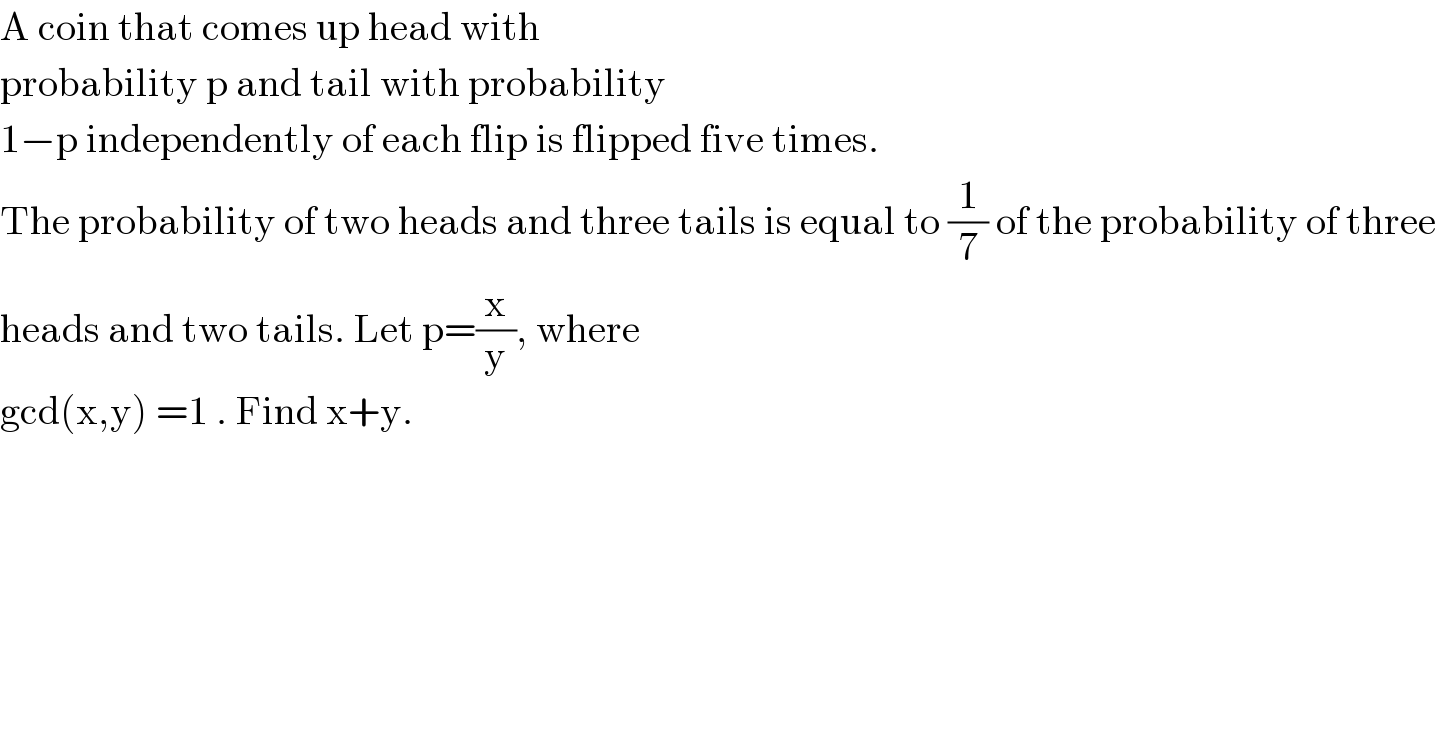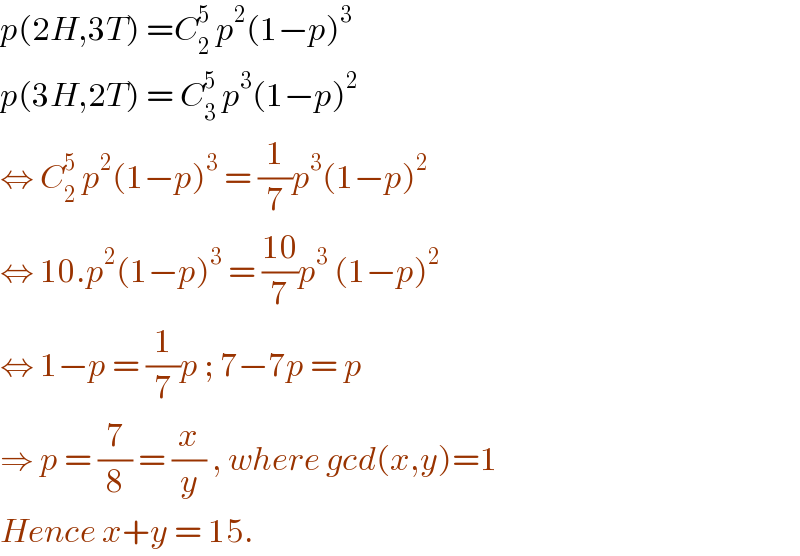
Question and Answers Forum
Previous in Probability and Statistics Next in Probability and Statistics
Question Number 111276 by Aina Samuel Temidayo last updated on 03/Sep/20

Answered by john santu last updated on 03/Sep/20

Commented by Aina Samuel Temidayo last updated on 03/Sep/20

